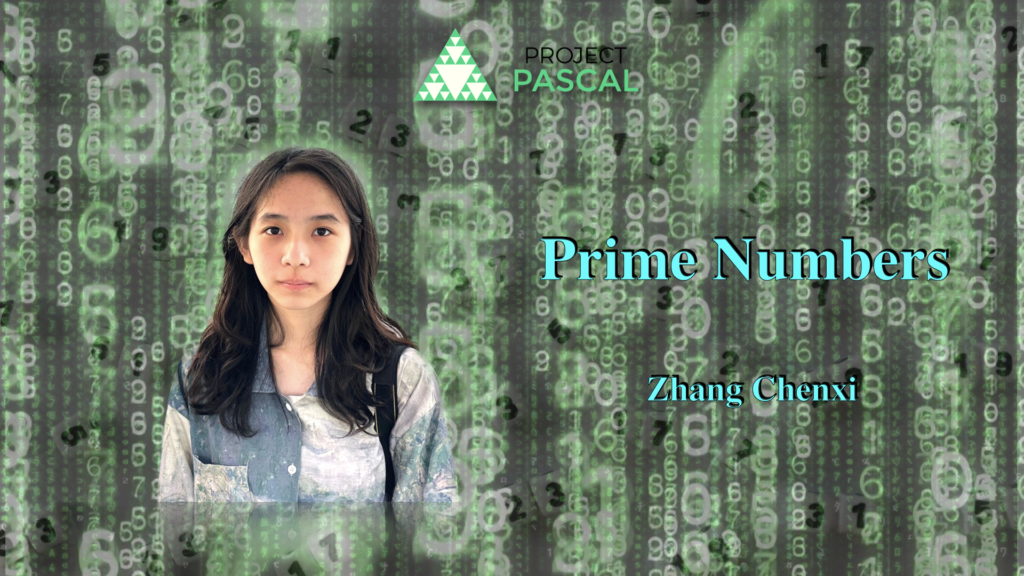
Prime Number by Zhang Chenxi
Prime numbers are widely regarded as the most fascinating existence in number theory, and pure Mathematics as a whole. Despite the scarcity of real-life applications except for cryptography, centuries of Mathematicians have pooled together their collective knowledge to try a hand at solving problems in analytic number theory such as the Twin Prime Conjecture and Riemann Hypothesis. Fortunately, we have seen significant progress in these problems over the years, as well as the extension of number theory to more advanced fields like algebraic geometry.
Distribution of Prime Numbers:
In 2013, a nearly unknown Mathematician – Yitang Zhang –took the Math world mainly ruled by bureaucratic academia by storm for his astonishing results that there are infinitely many pairs of prime numbers that differ by 70 million. He was an astonishing case by any means; worked at a lesser-known University of New Hampshire; hustled at Subway; and was at the ripe age of 58 when he made this first breakthrough.
As such a result looked eerily synonymous with the twin prime conjecture, it set off one of the biggest collaborative projects led by Terence Tao called Polymath to lower the bond from 70 million, a seemingly gargantuan and arbitrary number. They managed to reduce it to 4680, before James Maynard, a young Mathematician from Oxford, reduced it further to 600, which he was awarded a Field’s Medallist for in 2022. It has now been drastically decreased to 246 again with Polymath’s efforts, using more sophisticated sieves and analytic number theory techniques. This may defy the layman’s expectations of Mathematicians as solitary lone wolves who toil away quietly at their pieces of scrap paper, though it is proven to be hardly the case. Just like that, the Math world watches with pulsating trepidation and excitement as our collective efforts have seen fruition toward many of the world’s largest unsolved Math problems, decreasing exponentially from an unfathomable 70 million to 246.
Why does it matter?
Dear readers, I would like to preface this section by reassuring you that I am not yet of the Mathematical caliber to understand Zhang’s and Maynard’s proofs, though it should be a subject of investment when I get to college.
Prime numbers in general are always something that has fascinated me. As Math Olympiad students, we have been taught divisibility rules for smaller prime numbers probably up to 11, then it gets more arbitrary from there – probably an amalgam of Euclidean’s algorithm, congruence classes, or just pure whack using mental math. At an intermediate level, the infinitude of prime numbers may seem very intuitive, especially as soon as one learns of Euclid’s proof by contradiction. There are other sequences of numbers which can be used to prove this as well – one being Fermat’s numbers, all of which are coprime to each other, and the Fibonacci series because they satisfy divisibility rules that if n|m, then Fn divides Fm.
Furthermore, using prime numbers to set a bound on certain Diophantine Equations is a very common technique. In Math Olympiad, we are exposed to theorems like Dirichlet’s Theorem on infinite arithmetic progression, and Bertrand’s Postulate, being able to apply their results in elegant ways yet usually not advanced enough to be acquainted with the proofs that they are derived from. There are much tighter and proven results for the distribution of primes, that it should follow the complexity of x/lnx, attesting to its asymptotic nature.
Fermat’s Last Theorem:
In 1997, Popular Science author Simon Singh published a book called Fermat’s Last Theorem, detailing the contributions of many Mathematicians throughout history to try their hand at providing proof to this 350-year-old problem. He was an amazing raconteur, as the book conveyed the mania of the many Mathematicians who lost themselves amid their calculations, the bouts of incorrect proofs, and the triumphs… I have seen the proof for case n = 4 using Infinite Descent during my earlier and grittier Math Olympiad years, not knowing that it was part of this enigmatic grail that the math world has devoted centuries to with the fealty of a believer. The enchantment it brings was brought to even pop culture, making a guest appearance in The Simpsons in the form of a deceptive counterexample to Fermat’s Last Theorem, which was shown to be incorrect.
Just like the beginning of a fairy tale, young Andrew Wiles discovered an embossed copy of the Last Problem by Eric Temple Bell at his local library, and the simplicity of the problem took his breath away. Perhaps that was the moment magic commenced, for he would proceed to make his childhood dream a reality – to become the first person to provide a successful general proof for Fermat’s Last Theorem and inspire a fluffy of novel techniques in modularity lifting. His results would be then known as the wild intersection between number theory and algebraic geometry, bringing the field itself to exciting new heights.
Perhaps in the foreseeable future, dear readers, one of us may just magically step into a library and develop decade-long fascinations with an unsolved problem, and dedicate our lives’ proceedings towards solving it. Be it how abstract these problems are, it has been done, and it will be done again.
References for the Proofs:
Bertrand’s Postulate:
https://sites.math.washington.edu/~mathcircle/circle/2013-14/advanced/mc-13a-w10.pdf
Dirichlet’s Theorem on Infinite Arithmetic Progression:
https://math.uchicago.edu/~may/REU2012/REUPapers/LiAng.pdf
Unsolved Problems in Mathematics:
https://en.wikipedia.org/wiki/List_of_unsolved_problems_in_mathematics
